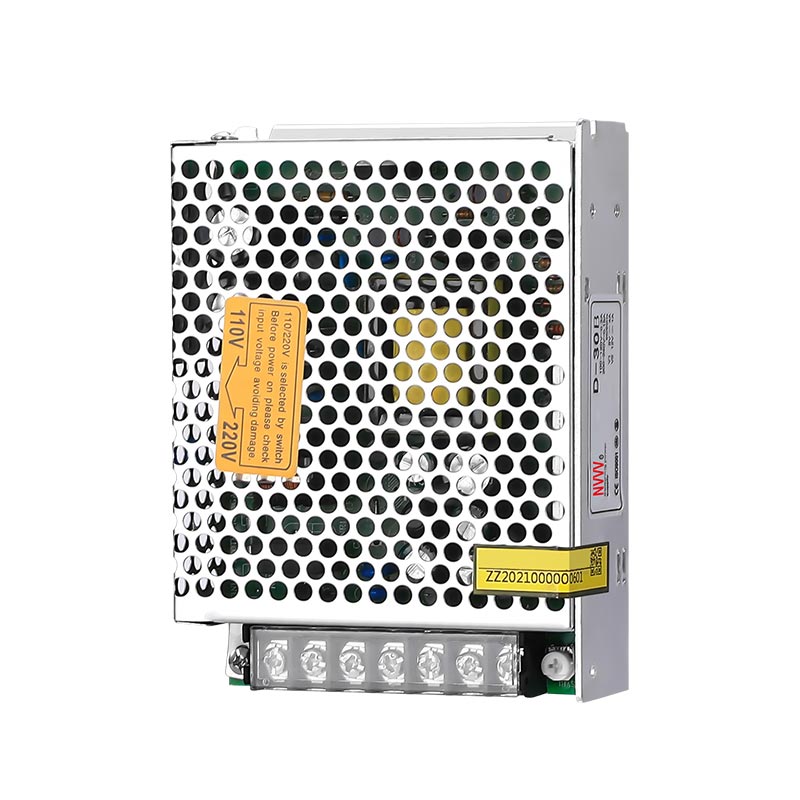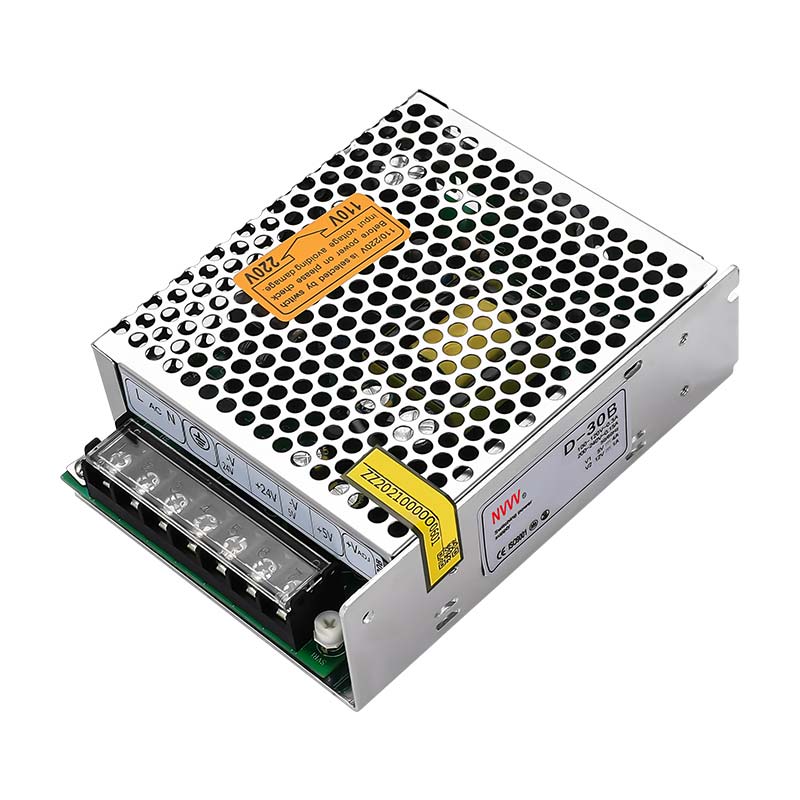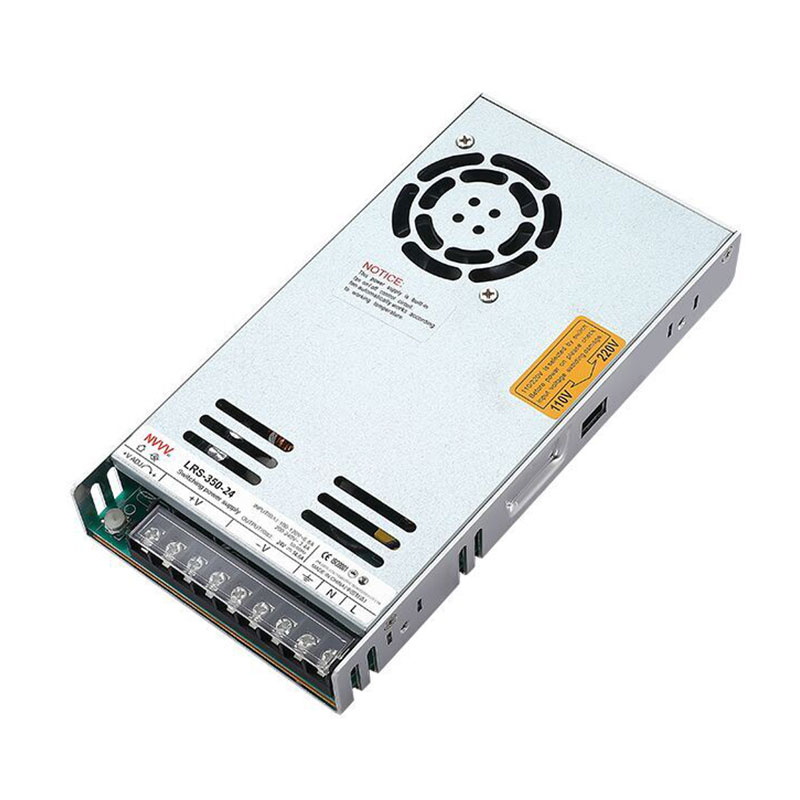Overview of categories and applications of switching power supplies
Switch Mode Power Supply (SMPS) plays a vital role in modern electronic equipment. They are widely used in various electronic devices due to their high efficiency, lightness and flexibility. Understanding the types of switching power supplies, their respective characteristics and their applicable fields is crucial to choosing the right power supply solution. At the same time, there are several factors to consider when selecting a switching power supply to ensure its performance and reliability. This article will explore these three aspects in detail.
Types of switching power supplies
1. Buck Converter
Features:
A step-down switching power supply converts a higher input voltage into a lower output voltage. It usually uses inductors, diodes and switching transistors to reduce the voltage. Due to the energy storage characteristics of the inductor, the buck type has higher efficiency, especially when outputting large currents.
Application areas:
Step-down switching power supply is widely used in computers, communication equipment, household appliances and other occasions that require stable low-voltage power supply. In portable devices, such as cell phones and laptops, step-down power supplies can effectively improve battery life.
2. Boost Converter
Features:
A boost switching power supply can boost a lower input voltage to a higher output voltage. Its working principle is to increase the output voltage by rapidly switching the switching elements. The boost circuit is simple and highly efficient, but may reduce efficiency when outputting high voltage.
Application areas:
Boost types are commonly used in battery-powered equipment such as LED drivers, photovoltaic inverters, and power management systems in hybrid vehicles. They ensure proper operation of equipment when the voltage is low.
3. Buck-Boost Converter
Features:
The buck-boost switching power supply can both reduce and increase the input voltage, and is suitable for situations where the input voltage range is unstable. Its circuit design is more complex, but it can provide stable output voltage when the voltage range changes.
Application areas:
This type of switching power supply is suitable for portable equipment that requires stable power supply, such as handheld instruments, vehicle-mounted electronic equipment, and embedded systems that require multiple voltage power supplies.
4. Flyback Converter
Features:
Flyback switching power supply is a commonly used isolated power supply suitable for low power applications. Its main features are simple circuit and low cost, and it is suitable for single output or few output situations.
Application areas:
Flyback power supplies are widely used in low-power applications such as chargers, small appliances, and standby power supplies. It is also commonly used in situations where multiple outputs are required.
5. Forward Converter
Features:
Forward switching power supplies are similar to flybacks but are more efficient and suitable for medium power applications. It is designed to better handle larger output powers.
Application areas:
Forward power supplies are commonly used in equipment with medium power requirements such as computer power supplies, communication equipment, and monitors.
6. Half-Bridge and Full-Bridge Converters
Features:
Half-bridge and full-bridge power supplies are the mainstream designs in high-power applications. They control the flow of current through two or four switching tubes and can provide high efficiency and high power output.
Application areas:
These power supplies are commonly used in electric vehicle charging stations, industrial power supplies, audio equipment, and other applications where high power conversion is required.
Characteristics and applicable fields of switching power supply
high efficiency
One of the biggest features of switching power supplies is their high efficiency. Compared with linear power supplies, the efficiency of switching power supplies is usually above 80%, and some can even reach 95%. This high efficiency makes switching power supplies particularly important in portable devices because it can effectively extend battery life.
miniaturization
Because switching power supplies regulate voltage through high-frequency switching, they do not require large transformers or inductors, allowing for miniaturized designs. This makes them ideal for modern electronics such as smartphones, tablets, etc.
flexibility
The switching power supply is designed to be flexible and can provide different output voltages and currents as needed. Its structure can be easily adjusted to suit different application requirements. This flexibility is widely used in consumer electronics, industrial control, and communications equipment.
Isolation and non-isolation
Switching power supplies can be designed in two types: isolated and non-isolated. Isolated power supplies provide additional safety by preventing users from direct contact with high voltages in power circuits. Non-isolated power supplies are usually used for internal circuits that do not require high safety.
Application areas
Consumer electronics: Miniaturized, high-efficiency switching power supplies provide ideal power solutions for mobile phones, laptops, tablets, etc.
Communication equipment: In communication base stations and network equipment, switching power supplies provide stable power support to ensure the normal operation of the equipment.
Industrial control: In industrial automation equipment, switching power supplies provide reliable power supply for sensors, controllers, etc.
Medical equipment: High-reliability switching power supplies are used in medical equipment to provide safe and stable power support.
Electric vehicles: In electric vehicles, switching power supplies are used in battery charging systems and motor control systems to ensure efficient operation of the vehicle.
Things to note when choosing a switching power supply
1. Output power
When selecting a switching mode power supply, the first thing to consider is the power requirements of the device. The output power of the switching power supply should be greater than the maximum power consumption of the device to prevent overloading.
Make sure the power rating of the power supply has enough redundancy. It is usually recommended to choose a power supply that is 20-30% larger than actually needed to cope with load fluctuations.
Consider the starting current. Some equipment requires a large instantaneous current when starting.
2. Efficiency
High efficiency not only reduces energy loss, but also reduces heat generation and extends the service life of power supplies and equipment.
Choose a switching power supply with an efficiency of more than 80%, especially when used in portable equipment.
High-efficiency power supplies reduce cooling requirements, thereby reducing the size and cost of heat sinks.
3. Voltage range
Different devices may require different voltage inputs, and the voltage range of the switching power supply should be able to meet the input requirements of the device.
Make sure the input and output voltage range of the power supply covers the operating range of the device.
If multiple voltage outputs are required, choose a power module with multiple outputs.
4. Temperature and environmental adaptability
The working environment of the switching power supply will affect its performance and life. Different applications have different requirements for the temperature and environmental adaptability of the power supply.
Choose a power supply that can operate over a wide temperature range, especially for industrial and outdoor applications.
Make sure the power supply has sufficient dust-proof and waterproof levels (such as IP65) and is suitable for special environmental conditions.
5. Security and Authentication
Safety is an important factor that must be considered when selecting a switching power supply. Power supplies with appropriate certifications ensure safe use.
Make sure the power supply has passed relevant safety certifications, such as CE, UL, FCC, etc.
Use isolated power supplies to provide better security, especially in equipment that comes into contact with users.
6. Reliability and longevity
Reliability and long life are critical to the use of switching power supplies, especially in mission-critical applications.
Choose products with good brand reputation and reliability.
Check the MTBF (mean time between failures) parameters of the power supply and choose a power supply with a high MTBF value.
Conclusion
Switched mode power supply has been widely used in modern electronic equipment due to its high efficiency, miniaturization and flexibility. From buck to boost to isolated power supplies, various types of switching power supplies meet the needs of different devices. When selecting a switching power supply, factors such as output power, efficiency, voltage range, environmental adaptability, safety and reliability need to be comprehensively considered. Understanding these basics and considerations will help us select the most appropriate power solution for a specific application, thereby increasing the overall performance and longevity of the equipment. I hope this article can provide you with useful guidance when selecting and using switching power supplies.










